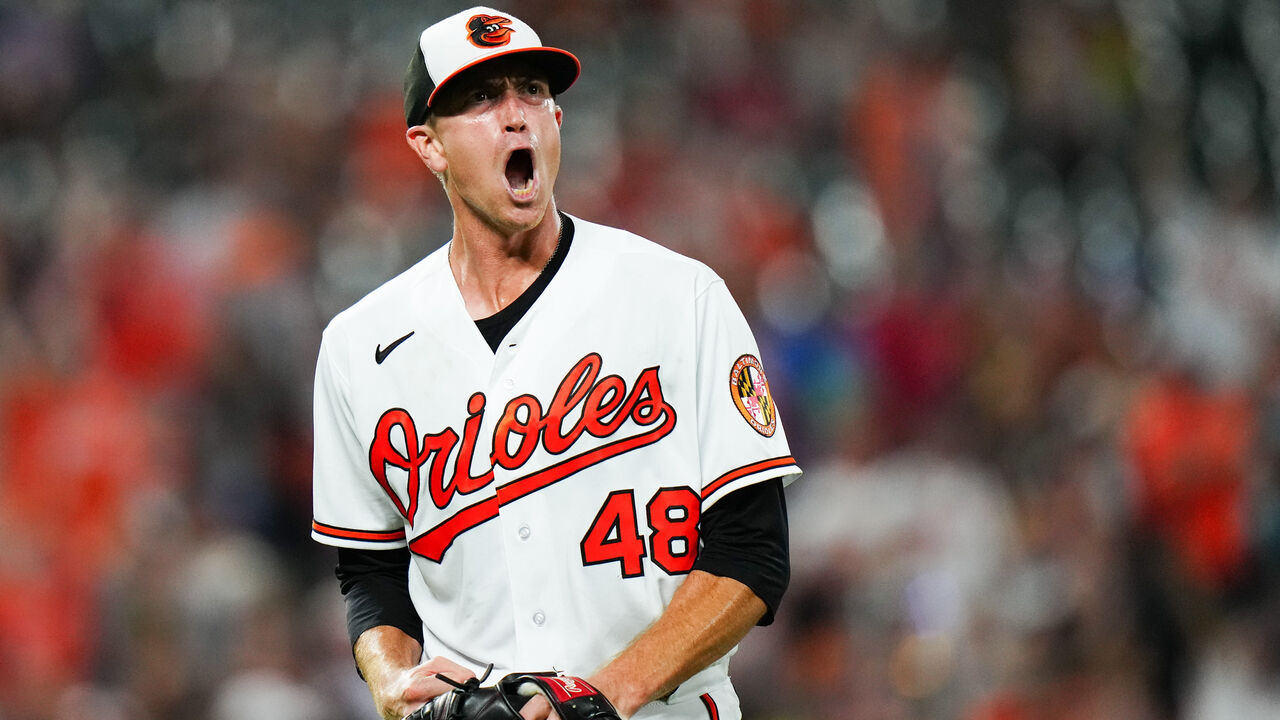Cardinals raised their floor with free-agent arms, but their ceiling remains low
Soon after the season, John Mozeliak said one of the Cardinals' primary goals was to add three starting starting pitchers this offseason. In line with general consensus and public outcry, the Cardinals' president of baseball operations identified the positional group as a glaring area of need.
St. Louis is coming off its first losing season since 2007 in large part because of its effort on the mound.
Cardinals starting pitchers combined for a 5.08 ERA in 2023, good for 26th in majors, and the sixth-worst mark in team history. Of the seven times their starters produced an ERA north of 5.00, four instances occurred in the 19th century.
Even adjusting for run-scoring and ballpark environments, it was still the 13th-worst effort in the Cardinals' storied history. It was bleak.
Last season, only the Rockies' starting pitchers struck out fewer batters, and only the Rockies', Royals', and Cubs' starting pitchers averaged a lower collective fastball velocity. The Cardinals had a talent and performance deficiency at the game's most important position. There are consequences when making evaluation and development errors like trading away Zac Gallen and Sandy Alcántara (both shipped to the Marlins in 2017 for Marcell Ozuna).
Early this offseason, the Cardinals wasted no time attempting to address the void, adding three starting pitchers. They signed veteran free agents Kyle Gibson and Lance Lynn to one-year deals in early November, and signed AL Cy Young runner-up Sonny Gray to a three-year, $75-million contract to close out the month.

Mission accomplished?
It depends on what the mission is. The Cardinals are better today; they raised their floor for 2024. But they don't appear to be shooting for greatness, either.
Gray, Lynn, and Gibson combined for 1,443 innings over the last three seasons, for an average of 160 2/3 innings per player per season, which is about as much volume you'll find in today's game. They also combined for three All-Star appearances in those nine collective seasons and a 4.04 ERA. The average ERA for starting pitchers during that time is 4.28.
With three wild-card spots now available in each league, raising the floor makes sense - the bar to clear to reach the postseason has never been lower.
The Cardinals also didn't overpay, and that may be significant for a club whose local television rights are tied to Diamond Sports Group, which declared bankruptcy earlier this year, has already shed some of its baseball broadcast rights, and appears headed out of business following the 2024 season.
The Cardinals guaranteed the three veterans $48 million for next season, with $50 million more allocated to Gray for the following two years. (Lynn also has a club option for 2025.)
The Cardinals also pivoted to focus on arms that can generate swing-and-miss (Lynn and Gray). Their pitch-to-contact philosophy was faltering.

Last year, with below-average outfield defense (minus-19 defensive runs saved, which ranked 26th) and a below-average defensive catcher in Willson Contreras (the Cardinals ranked 26th in DRS at catcher, and 28th in pitch framing), the club needed more power and less finesse on the mound. It can no longer count on Yadier Molina's defensive boost for its staff's performance.
So, the approach makes sense. But it isn't raising the Cards' ceiling enough should they actually reach the postseason.
The World Series-champion Texas Rangers ranked fourth in the majors last year in ERA-, which adjusts for ballpark and yearly run-scoring environments. Nathan Eovaldi and Jordan Montgomery were excellent in the postseason. (That Montgomery was so good in Texas after being traded from St. Louis raises more questions about the Cardinals' pitching approach. Can they get the most out of a pitch-to-contact guy like Gibson?)
The 2022 champion Astros led the American League and were second only to the Dodgers in ERA- (77), 23% better than the MLB average.
The 2021 World Series champion Braves were seventh in the majors with a 90 ERA-.
Even middling regular-season teams that surge in October like the Phillies generally have strong starting rotations. Remember: the best arms take on a greater share of innings in the postseason.
Gray fits as a top-of-the-rotation pitcher on most teams. He's coming off a career year, and he ranks between 16th and 23rd among qualified starting pitchers in WAR, ERA, and FIP over the last three seasons.
But the Cardinals need more than Gray to form a formidable staff. He's leading a group of mid- and back-of-rotation arms. While the floor's raised, only Gray projects to post an ERA and FIP under 4.00.

To acquire arms with elite potential, the Cardinals will have to explore the trade market and target guys like Tyler Glasnow, Corbin Burnes, or Dylan Cease. Among free agents, Gray was considered in the second tier below arms like Yoshinobu Yamamoto, Aaron Nola, and Blake Snell. But those arms are all expected to sign for $150 million or more, prices Cards ownership has never been willing to meet.
There's also the age question. Lynn and Gibson are 36. Lynn posted a 5.73 ERA last season and threw with his lowest velocity (92.6 mph) since 2017. The Cardinals are hoping that was an outlier. Gray's 34.
Mozeliak said the Cardinals aren't done. Perhaps they'll land an impact bullpen arm or even another starting pitcher. Maybe they'll strengthen what was expected to be one of the best hitting lineups last year. There's more than one way to build a winner, but dominant starting pitching is a common thread.
The Cardinals did a lot of shopping early this holiday season, but if they want to be great, they can't be done.
Travis Sawchik is theScore's senior baseball writer.